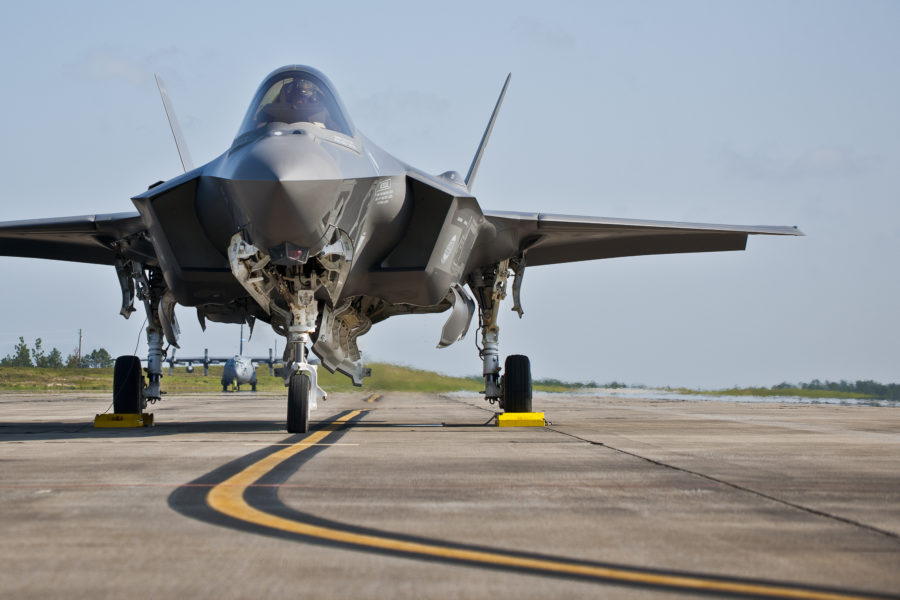“When markets are competitive,” a new Department of Defense report says, “the Department reaps the benefits through improved cost, schedule, and performance for the products and services needed to support national defense.” The report also states that competition leads to a healthier industrial base, more innovation, and ultimately, better national security.
“We hear a clear call from the Air Force to ‘accelerate change.’ Competition is a great way to do it,” says Gen. Frank Gorenc (Ret.). “We have an opportunity in the near-term to introduce competition through a new engine for the world’s most advanced fighter, the F-35.”
Gen. Gorenc, who accumulated nearly 5,000 flight hours in his distinguished Air Force career, knows well the asymmetric advantage the U.S. holds in jet engine manufacturing. He wants to keep it that way.
There is widespread acknowledgement that the current engine won’t be able to accommodate the F-35’s future capabilities—hence Gorenc’s call for competition. The adaptive cycle engines currently being tested through the Adaptive Engine Transition Program (AETP) would offer game-changing capability for the F-35 and enable future capabilities for decades into the future. Engine manufacturers GE (who Gorenc consults for) and Pratt & Whitney are AETP’s two participants.
The Air Force’s stated goals for AETP engines include 25% better fuel efficiency, 10% more thrust, and double the thermal management capability over today’s engines. Those are eye-popping numbers to Gorenc. Having served in a number of high-ranking Air Force positions following his flying career, he recognizes the strategic options that kind of performance would open up for the Air Force.
That’s why he’s “really encouraged” by the request for information the Air Force released in January for the F-35 Adaptive Engine Replacement (FAER) program, as well as the continued investment in AETP requested in the Fiscal Year 2023 budget. It signals serious interest in bringing an adaptive cycle engine to the F-35, according to Gorenc.
“Moving forward from that RFI to an RFP for an Engineering and Manufacturing Development program is the only way to introduce a competition for F-35 propulsion. An upgrade to the existing engine means no competition. The Air Force has invested $4 billion-plus in industry since 2007 to bring these adaptive engines online. You have two companies that received equal contracts to build and test adaptive cycle engines, they both have, and now we have an opportunity to reap all the benefits competition brings to the table for a high-volume program,” he adds.
In reference to a proposed upgrade of the existing engine, Gorenc argues, “Along with not creating competition, an upgrade to the existing engine simply can’t come close to the performance of an adaptive engine. Right now, an upgrade exists only as a proposal.”
Meanwhile, Gorenc says the tests of both companies’ engines indicate considerable progress in maturing the new architecture of these engines—real engines producing real results.
Looking specifically at GE’s progress since December 2020, he highlights testing of its XA100 adaptive cycle engine, which includes ground test campaigns on two separate engines from the company’s Evendale, Ohio, facility. That testing has demonstrated the Air Force’s performance goals, and GE has revealed that its engine will not only fit the Air Force’s F-35A, but also the carrier-based F-35C. GE’s engine began further testing at the Arnold Engineering Development Complex in late March. Pratt & Whitney’s XA101 adaptive cycle engine, meanwhile, fired up in September 2021 and reported “amazing” results.

“So, we have long-term solutions for F-35 propulsion in AETP engines that have already seen significant investment,” Gorenc says. “Congress, leaders in the Pentagon, and industry agree that something must be done about the engine. I want the engine that gives Air Force pilots an overwhelming advantage for decades, not just an incremental upgrade that we’ll have to revisit over and over again.”
The F-35 is expected to be around for another 40 years. With double the thermal management capability of today’s engine, AETP engines offer room for the F-35 of the future to expand its mission capability with next-gen systems. That’s not to mention the lifecycle fuel and CO2 savings the AETP engines would produce, with second order impacts on the Air Force’s tanker fleet.
With more than 2,400 of these advanced aircraft expected to roll off the line in total, introducing a more capable engine would follow the lead of several 4th generation fighters that received a new engine, including the F-16, F-15, and F-14. “This is a normal evolution of a high-volume program like the F-35,” Gorenc says.
He concludes: “There are lots of people who are invested in the long-term success of the F-35 program. Those people should be invested in a competition for a new adaptive cycle engine. It’s the only path that keeps the F-35 relevant decades into the future. We owe our Warfighters the very best equipment—and the time is now.”
Gen. Frank Gorenc is a consultant with GE Aviation, which paid to publish this this article.


